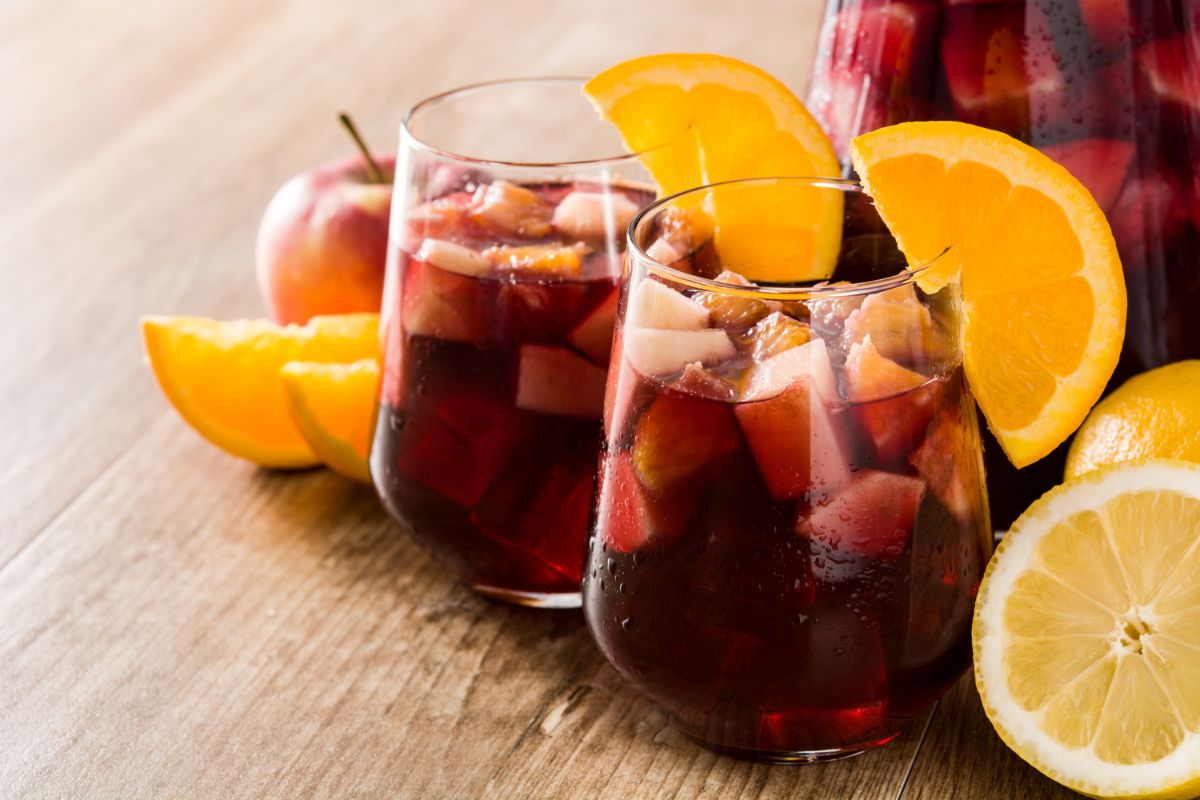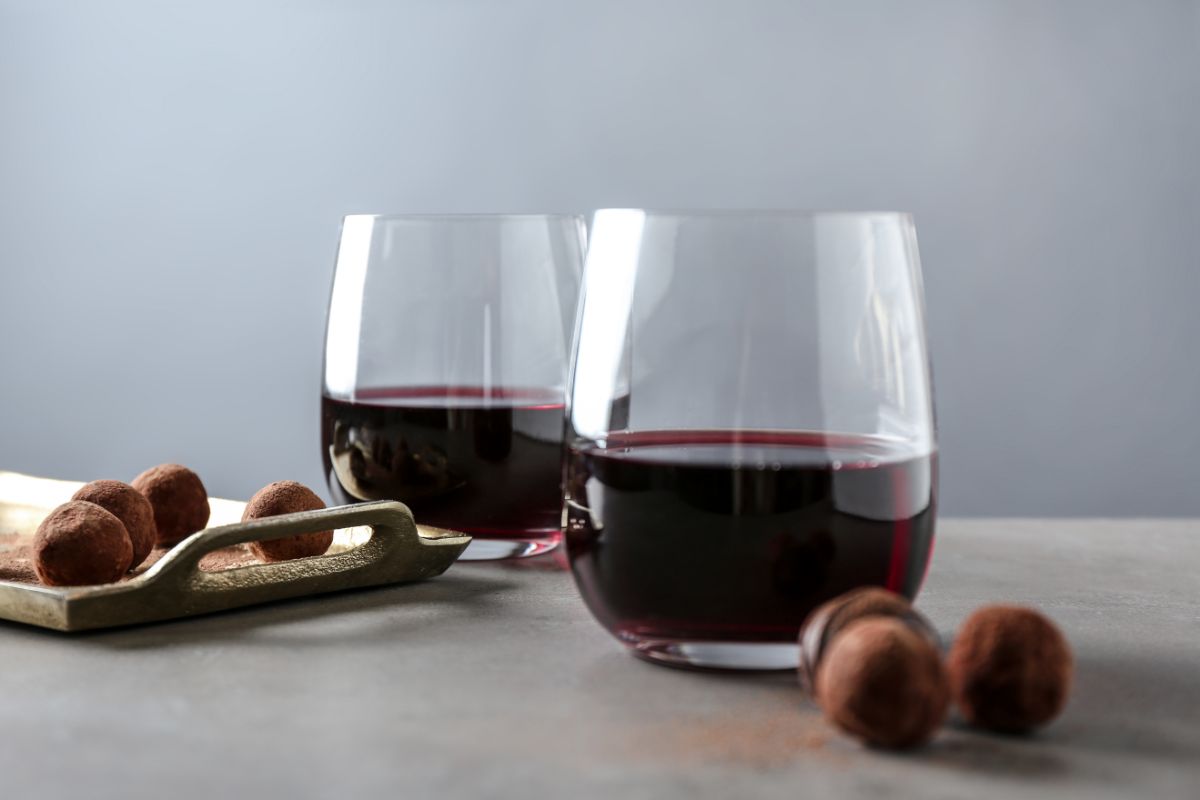One of the main questions that get asked when it comes to wine is whether you want red or white. However, that is an incredibly vague question when you think about all the different varieties of wine that fall into both of those categories.

If you are a red wine drinker, you might prefer a dry red or a sweet red. Not all drinks menus will have the dryness of the wine listed.
This can make it difficult to know which type of wine will suit your tastes. In this guide, we are going to look at the sweetness chart of red wines to help you make a more informed decision when eating at a restaurant.
Red Wine Sweetness Chart
All types of wine have varying degrees of sweetness and dryness. The more dry a wine is, the less sweet it is but the bolder and stronger the flavor is.
On the other end of the scale, there are sweet wines that have very delicate flavors and aromas. Knowing which wines fall into the categories of dry and sweet can help you order a wine you will enjoy every time.
Below we have split red wines into dry and sweet. The wines mentioned in both of these categories are on a spectrum. The wines are listed from driest through to sweetest.
Dry Red Wines
Bold and savory wines are some of the driest wines you can get. These wines have the least sweet flavor of all red wines. The fruity notes are more subdued in these wines than in sweeter wines.
The tannins are a lot stronger and provide the bitter flavor that is associated with dry red wines. This category includes wines such as:
- Cabernet Sauvignon
- Tempranillo
- Sangiovese
Elegant and savory wines refer to dry red wines that have tannins that are slightly less bitter. These wines still don’t have an overly fruity palate.
However, they do have a more peppery, earthy, or vegetable-based flavor. None of these flavors or aromas add sweetness to the wine. This category includes wines such as:
- French Malbec
- French Pinot Noir
- Syrah
Bold and fruity wines sit firmly in the dry wines category. Although these wines have stronger notes of fruits and berries, they still contain almost no sugar.
The aromas and flavors of plums, raspberries, cherries, and more help to make these types of wines feel sweeter than other dry red wines. Wines in this category include:
- California Cabernet Sauvignon
- Argentinian Malbec
- Shiraz
- Zinfandel
- Petite Syrah
Approachable and fruity wines are the last type of wine that fits into the dry wine category. This is the sweetest of the dry wines but it is by no means a sweet wine.
The wines that are labeled as approachable and fruity are much more palatable to casual wine drinkers. The wines in this category help to bridge the gap between dry and sweet red wines. Most bars and restaurants will have one of these wines on their menu. Approachable wines include:
- Pinot Noir
- Grenache
- Merlot
Sweet Red Wines
Slightly sweet red wines are often blends of wine rather than true reds. These wines are usually from California and they contain residual sweetness from the grapes.
Some of the most common Californian blends include Cupcake Vineyards Red Velvet and Apothic Red among others. You can also get slightly sweet red wines from Italy. These are often more nuanced than Californian sweet red blends. Slightly sweet red wines include:
- Lambrusco
- Brachetto d’Acqui
- Californian red wine blends
Very sweet dessert wines are the sweetest kind of red wine that you can get. These wines are often consumed in a different way than other types of red wine.
Along with having a much higher sugar content than other types of red wine, sweet red dessert wines are much richer than dryer wines. Some popular types of very sweet red wines include:
- Port
- Banyuls
- Vin Santo
- Recioto Della Valpolicella
- Madeira
Dessert Wine Recommendations
Dessert wines are exactly what they sound like. They are rich and sweet wines that are traditionally served alongside or in place of dessert after a meal. There are some dessert wines that are more popular than others.
The most common dessert wines that you will come across in restaurants are Port and Madeira. These are both rich wines with very sweet flavors and aromas.
They are often served instead of a dessert. With that being said, some restaurants also serve dessert wine alongside their range of desserts.

It is important to note that there are some wines that often fall under the category of dessert wines that are more commonly used as aperitifs.
Aperitifs are sweet wines that are used before the appetizers are served to mingling guests or guests who haven’t ordered food yet. They are often thought of as liquid appetizers. Examples of popular aperitif wines include Lillet Red and Dubonnet Red wines.
Because these types of wines are served before or after food, there are no specific types of food that they pair well with. Instead, they can be served before and after any type of meal or dish.
Wine Sweetness Levels
The category that a wine falls into isn’t determined by individual perceptions of the taste of the wine. Instead, the wine is categorized by the amount of sugar that remains in the wine after the production process has been completed.
All wine begins with a certain amount of natural sugar thanks to the grapes that are used to make it. This natural sugar content converts to alcohol through the fermentation process. The longer the wine is allowed to ferment, the higher percentage of the sugar turns to alcohol.
When all the sugar has been allowed to convert to alcohol, there will be no sugar left in the resulting wine. This means that the wine will be dry and bitter.
However, if the fermentation process is shorter, or more specifically if the fermentation process is cut short before all the sugar has been converted, the wine will naturally be sweeter.
When there is sugar left in the wine, this means that the alcohol content is going to be lower than it is in dryer wines.
Dessert wines are the sweetest type of wine you can get. Logically, this should be the type of wine with the lowest alcohol content due to the high sugar levels. However, because dessert wines such as port are fortified, they actually have a reasonably high alcohol content.
In order to make dessert wines, a neutral grape spirit, called aguardiente, is added to the wine. This halts the fermentation process to leave more sugar behind. However, it also adds additional alcohol to the wine to make it stronger.
It is also important to remember that all wines fall on a spectrum. This means that a wine can be classified as dry yet have some sweet aromas and flavors.
This is particularly true of wines with fruity or aromatic undertones. It is the aroma of fruit, berries, and flowers that provide the illusion of sweetness. These wines can often be referred to as medium wines.
Final Thoughts
There are many different types of red wine that you can purchase from restaurants and liquor stores. Each red wine fits into a certain category of sweetness that ranges from dry to super sweet.
Dry wines tend to have a more bitter taste while sweet wines are self-explanatory. There is sure to be a red wine that suits your taste preferences.
Frequently Asked Questions
We briefly mentioned above that the sweetest types of wine are usually used as dessert or aperitif wines. These wines are usually served before and after a meal rather than during it.
There are certain wines, such as Lillet Red that are most commonly used as aperitifs, this wine will only be offered before your meal. Other sweet wines, such as port, are only served after your meal commonly in place of a meal or alongside a dessert.
Both aperitif and dessert wines are fortified which means that they are quite strong. Because of this, it is common to only serve a single glass of each to dinner party guests to avoid over-intoxicating them. There are some people who prefer dessert or aperitif wines over any other kind of wine.
It is possible to request these wines to be served with your meal. With that being said, if you are visiting a high-end restaurant, it is possible that they will not honor this request if they have wines that pair with their meals.
Wines that are sweet but aren’t classified as dessert or aperitif wines can be served at any point during a meal. The only restriction that may be placed on the serving of sweet wines is if the restaurant pairs wines with the dishes on the menu.
Dry wines have fewer restrictions placed on them than sweeter wines. There is no specific type of dry wine that has rules surrounding what point in the meal it should be served. This means that dry wines can be ordered and served at any point during the meal.
With that being said, in some restaurants and for some people, there are restrictions that should be placed on the specific flavors and aromas of wines and the type of food that they should be served with.
The dryer the wine, the richer the food that it is served with should be. Commonly, this is steaks or other red meat dishes. Sweeter wines pair well with desserts and lighter meals.
Red wine is most commonly served at room temperature. The ideal temperature range for most red wines is between 54 – 56 degrees Fahrenheit. Medium-bodied red wines can be served between 57 – 60 degrees.
If you are unable to maintain a specific temperature for your red wine, the most important rule to follow is that any type of red wine should never be served chilled.
If you are used to drinking white wine or it is particularly hot in the summer, it can be tempting to chill your wine in the refrigerator or add some ice cubes. This should be avoided with red wines as it affects the flavor of the wine.
- Why Does Wine Taste Better With Age? - June 14, 2023
- What Does It Mean When A Bottle Of Wine Is Corked? - June 14, 2023
- Wine Fridge Vs Wine Cellar – Which One Should You Choose? - June 14, 2023
